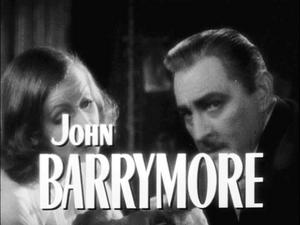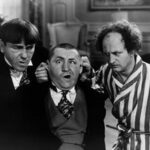Think of Hollywood families, and many names — Bridges, Douglas, and Sutherland among them — come to mind, but fewer are the dynasties: those that have lasted three generations or more. First among any list of multigenerational film families (and not just because of alphabetical order) is the Barrymores.
During the first decades of the 20th century, the Barrymores, John, Ethel and Lionel, children of 19th-century thespians Maurice and Georgiana Barrymore, were considered the royal family of the stage and screen.
John, later nicknamed “the Great Profile” for his classically handsome face, started out in theater in 1905 and found fame within a few short years. He was acting in silent films by 1912 and became one of the great legends of the screen, but his sound-era career (the highlight of which was “Grand Hotel”) was uneven because of his alcoholism, and he died at 50 in 1942.
Ethel, who like John originally had other plans (he worked briefly as an illustrator; she had planned to become a pianist), started out in theater in 1895 but didn’t appear in films until her mid-30s. She continued to appear onstage frequently but was also essayed roles in film until the late 1950s. (“Rasputin and the Empress,” the only film starring all three Barrymore siblings, was her first sound film.)
Lionel, the youngest of the three, wrote and produced films and was a composer as well (and is credited with inventing the boom microphone), but he appeared in over 200 films. Best known as a character actor in such films as “You Can’t Take It with You” and “It’s a Wonderful Life,” he used a wheelchair for the last 15 years of his life, onscreen and off.
The next generation of the dynasty included John Drew Barrymore, son of John, who worked in TV and film from around 1950 to the mid-1970s (most notably in Fritz Lang’s “While the City Sleeps”), and his sister Diana, whose promising career quickly flamed out due to alcohol and drug abuse. Ethel’s son Samuel Colt had bit parts in a few movies in the 1950s, but another son, John Drew Colt, had only one film role and her daughter Ethel Colt worked only on the stage, mainly in the 1930s.
Drew Barrymore, daughter of John Drew Barrymore, hit the big time as a child actor in “E.T.: The Extra-Terrestrial,” but she worked mostly in TV during the rest of the 1980s. Her adolescence was clouded by alcohol and drug abuse, and though Drew worked regularly, she hit her stride only in the late 1990s. She’s been a top box office draw since then, though, most visibly in “Charlie’s Angels” and its sequel. Her half-brother, John Blyth Barrymore, did not fare so well, working steadily but without distinction from the mid-1970s to the mid-1990s.
Neither Drew Barrymore nor John Blyth Barrymore have had any children, so the First Family of Filmmaking may be in its last generation.




